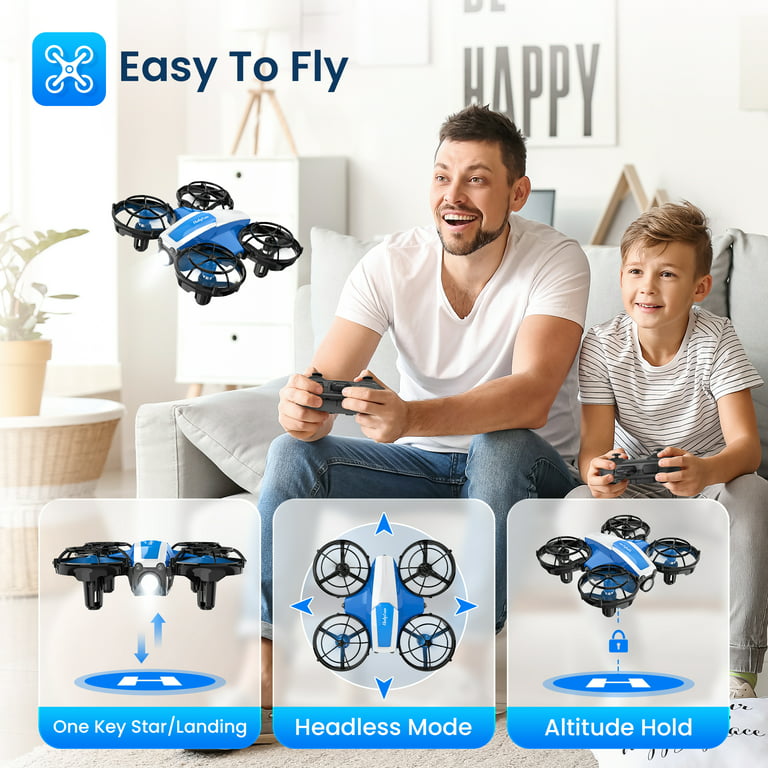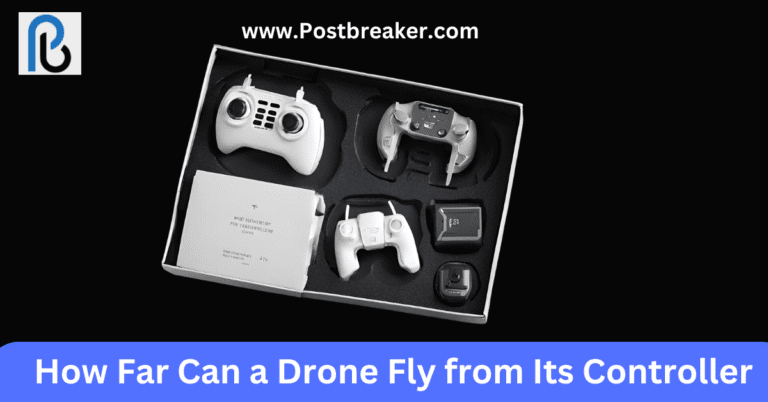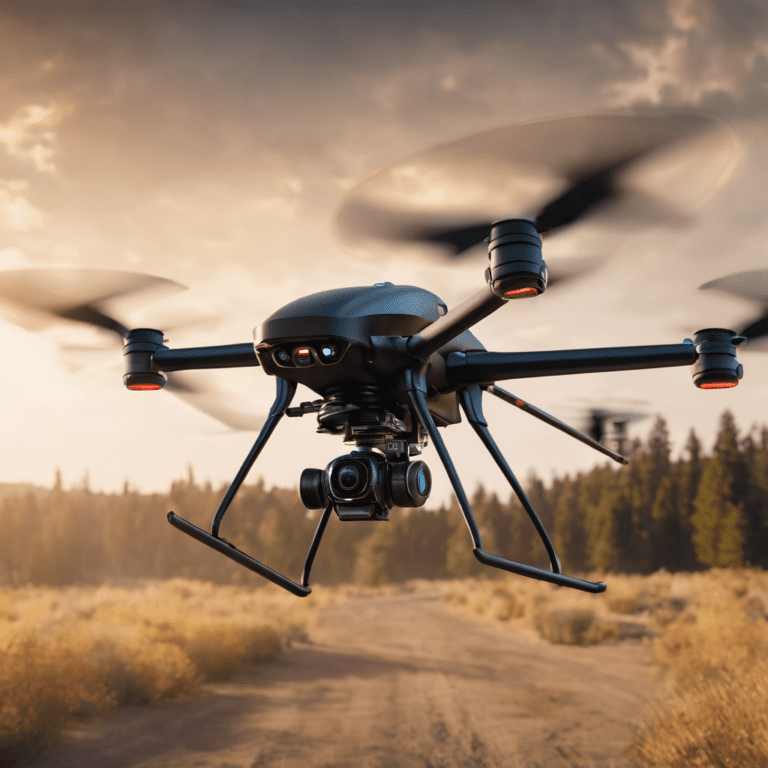What is Headless Mode on a Drone : Unleashing the Flight Freedom
Headless mode on a drone eliminates the need to adjust the drone’s orientation before flying, making it easier for beginners to pilot the drone. Drones have become increasingly popular in recent years, with more people using them for various purposes, such as aerial photography and videography, racing, or even just for recreational purposes.
However, flying a drone can be challenging, especially for beginners who may struggle with navigating the drone in the correct direction. This is where the headless mode feature comes in handy. In headless mode, the drone’s control is based on the pilot’s perspective rather than the drone’s orientation.
This means that no matter which way the drone is facing, pushing the control stick forward will move the drone forward, and pulling it back will move it backward. This eliminates the need to constantly adjust the drone’s orientation before flying, making it easier for beginners to pilot the drone. We will explore headless mode on a drone in more detail, discussing how it works and its benefits for drone pilots.

Credit: www.amazon.com
The Concept Of Headless Mode
Headless mode is a function that enables a drone to fly based on the controller’s perspective, rather than the drone’s orientation. In other words, the drone disregards its front, back, left, and right directions, and instead aligns its movements with the pilot’s position.
By default, a drone’s movements depend on its own orientation, which can be disorientating for beginners. Headless mode eliminates this confusion by simplifying the control process. When the drone is in headless mode, moving the joystick forward makes the drone go forward relative to the controller, regardless of its actual direction.
How Headless Mode Works:
- The controller communicates with the drone, providing it with flight instructions.
- The drone receives these instructions and adjusts its movements accordingly.
- In headless mode, the drone interprets the controller’s inputs based on its own perspective, ensuring intuitive control.
- Headless mode simplifies orientation, making it easier for beginners to operate a drone.
Advantages of Headless Mode:
- Eliminates the need for precise orientation control, reducing complexities for beginners.
- Makes it easier to operate a drone without worrying about its actual direction.
- Enables intuitive and straightforward control, enhancing the overall flight experience.
- Reduces the risk of crashes caused by incorrect pilot orientation.

Credit: www.walmart.com
Understanding The Functionality
In Headless mode, a drone’s functionality is designed to simplify orientation and enhance maneuverability. In this mode, the drone’s front end or “head” becomes independent of its actual orientation, allowing it to move in the direction given by the pilot’s input rather than the direction it is facing. This eliminates the need for the pilot to constantly adjust the drone’s orientation to navigate it accurately. The drone’s flight control system ensures that it responds to the pilot’s commands relative to its position, regardless of its heading. This feature is particularly useful for beginners or pilots who have difficulty maintaining the drone’s orientation during flight. With Headless mode, controlling the drone becomes effortless, stress-free, and accessible for users of all skill levels.
Applicability In Various Scenarios
Headless mode on a drone allows beginners to fly with ease, focusing on direction rather than orientation. This feature simplifies controls, making it beginner-friendly and reducing the risk of crashes. Additionally, in aerial photography, headless mode ensures that the drone’s orientation doesn’t affect the captured footage, leading to stunning, professional-grade images and videos.
Potential Drawbacks
Using the headless mode on a drone can come with a few potential drawbacks that users should be aware of. First, it can lead to reduced pilot proficiency. Without the clear visual cues provided by the drone’s orientation, pilots may find it more challenging to control the drone accurately. This may require extra practice and experience to overcome. Secondly, headless mode may have limited compatibility with certain drones. While many drones support this feature, some models may not be compatible or may require additional setup. This could limit its usability for some users. Despite these potential drawbacks, headless mode can still be a valuable feature for beginners or when precise drone control is not required.
Cultivating Advanced Skills
Headless Mode is a feature on drones that allows pilots to control the drone’s movement solely based on its position in relation to the transmitter, disregarding the drone’s orientation. Moving Beyond Headless Mode involves honing more advanced skills to truly master the art of drone flying. One such skill is Manual Flight, where the pilot relies on their own spatial awareness and control to navigate the drone.
Mastering Manual Flight requires practice and understanding of the drone’s capabilities. The pilot must learn to adjust the throttle, yaw, pitch, and roll to maneuver the drone accurately. By becoming proficient in Manual Flight, pilots can perform precise movements, execute complex maneuvers, and fly more intuitively.
To further improve skills beyond Headless Mode, pilots can also explore additional features and modes on their drones, such as Waypoint Navigation, Follow Me Mode, or other advanced flight modes available on different drone models. These features can provide unique and exciting opportunities for aerial photography, videography, and exploration.
| Benefits of Cultivating Advanced Skills | Challenges of Cultivating Advanced Skills |
|---|---|
| 1. Increased control and precision during flights | 1. Requires more practice and time investment |
| 2. Ability to perform complex maneuvers and aerial shots | 2. Potential for increased risk if not mastered properly |
| 3. Enhanced creativity and exploration possibilities | 3. Need for continuous learning and staying updated with drone technology |

Credit: patch.com
Frequently Asked Questions For What Is Headless Mode On A Drone
What Does Headless Mode Do?
Headless mode separates the front-end and back-end of a website, allowing for greater flexibility and customization in design and content. It enables developers to use any front-end framework or technology, providing a more efficient and versatile approach to website development.
What Can Disable A Drone?
Physical interference, such as signal jamming or radio frequency interference, can disable a drone. Other methods include hacking the drone’s control system and using anti-drone technology like jammers or net guns.
What Is Gravity Mode On A Drone?
Gravity mode on a drone allows it to maintain a constant altitude without manual control. It uses sensors to measure the force of gravity and adjusts the drone’s throttle accordingly. This feature is particularly useful for capturing stable aerial footage or navigating in tight spaces.
What Does Trim Mean On A Drone?
Trim on a drone refers to adjusting its balance for stable flight. It helps prevent drifting and corrects any imbalances. Adjusting the trim ensures the drone stays in place when hovering and maintains a steady flight path.
Conclusion
Headless mode on a drone is a valuable feature for beginners. It allows for easier control and reduces the learning curve. By simplifying directional control, pilots can focus on mastering flight maneuvers. Understanding headless mode functionality can enhance the overall drone piloting experience.
Embrace this innovative feature for a seamless flying experience.



